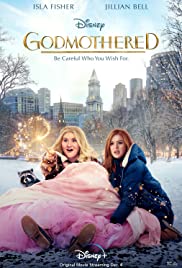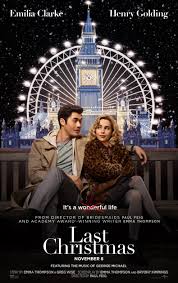|
At the beginning of PG-rated Godmothered (2020) a fairy godmother named Eleanor (Jillian Bell) lives in the Motherland, which is populated exclusively by women (fairy godmothers). At the very end of the movie there is an animated scene in which Eleanor, now a fairy godmother teacher, addresses a group of young fairy godmother trainees in the Motherland. These trainees are under 10 years old and all wear dresses. They are all little girls except for one boy. We hear a very old fairy godmother say, “We weren’t just old. We’d become old-fashioned.” Then Eleanor says, “There are those who might say I had spent my whole life believing in fairy tales. Well, now I believe in them more than ever. It’s just that they come in all different shapes and sizes. Just like us.” At this point the camera focuses on four of the children, three girls and the boy. The message conveyed is that it is old-fashioned not to accept boys as girls and boys in female-only spaces. This inclusion in the movie constitutes a red flag because it is grooming. It encourages viewers to be comfortable with males in spaces intended for females. And we are seeing more and more of this in the woke name of ‘inclusivity’.
What is this boy doing in MOTHERland (a land clearly intended for females)? Where is Fatherland? Why can’t he just hang out there in his dress? Why aren’t men making room for him and accepting him just as he is? Why must women allow this male in their space? Why can’t women and girls have any spaces of their own? Why is it always women and girls who are obliged to make room for males who do not conform to regressive male sex role stereotypes? This scene from Godmothered is grooming viewers to accept males in female spaces. It is grooming us to believe the lie that boys can be girls (and by extension that regressive sex stereotypes matter more than biology). He’s wearing a dress? He must be a girl! Put him in with the girls! In this scene Disney is pushing gender identity ideology on viewers. Each time Disney and other filmmakers show us males in spaces intended for females they are normalizing the loss of women’s sex-segregated spaces. The more times children (and adults) see these types of inclusions the more likely they are to ignore their own valid concerns about men in female-only spaces. In Canada and the United Kingdom the authorities have been placing violent male sex offenders (men) who self-identify as women into women’s prisons and the result has been that women have been raped and sexually harassed by these men. There is a reason we have sex-segregated spaces (e.g. women’s prisons, rape shelters). It is not because all men pose a threat to females but rather because time has shown that the overwhelming majority of the sexual violence committed against females is perpetrated by men (SEE: crime statistics, any country). So Disney, stop grooming us to accept males in our sex-segregated spaces. There is nothing wrong with gays and men in dresses. But men need to make room for them in their own spaces. Quit telling females that it is our responsibility to make room for males. Women matter, and we have a right to our own Motherlands. Copyright © 2020 Alline Cormier
0 Comments
I have been putting this off—so much to do, so little time, especially in December—but it is time to give a shoutout to Last Christmas (2019). Ask a group of men and women what their favourite Christmas movie is and chances are you will get very different answers. Many men will name Die Hard (1988) as a Christmas classic. Women are more likely to name Love Actually (2003). Most Christmas movies revolve around a man (or boy): It’s a Wonderful Life (1946, James Stewart), A Christmas Carol (1951, Alastair Sim), Die Hard (Bruce Willis), Scrooged (1988, Bill Murray), Home Alone (1990, Macaulay Culkin), The Santa Clause (1994, Tim Allen), Jingle All the Way (1996, Arnold Schwarzenegger), How the Grinch Stole Christmas (2000, Jim Carrey), Elf (2003, Will Ferrell), The Man Who Invented Christmas (2017, Dan Stevens), etc. Very few Christmas movies revolve around women, and those that do have only been released recently. There is no long tradition in Hollywood of Christmas movies about a woman. Surprise, surprise. These ones do: The Holiday (2006, Kate Winslet, Cameron Diaz), Noelle (2019, Anna Kendrick) and Last Christmas (2019). Although Little Women (2019) is not technically a Christmas movie it includes Christmas scenes and has the most to offer female viewers. Greta Gerwig wrote the screenplay for this version and directed it and I wrote about it earlier this year (SEE: post January 4, 2020). Last Christmas is unique in that it revolves around one woman (Emilia Clarke). Not only that but there are several significant female characters (Michelle Yeoh, Emma Thompson, Lydia Leonard) and even women who have bit parts are named. It passes the Bechdel test in the first 10 minutes, and women speak throughout. It is also almost totally devoid of violence against women (VAW)—Clarke is shoved at one point—which cannot be said Die Hard (women’s lives are threatened). If you only have time for a couple of Christmas movies this year Last Christmas should be at the top of your list, right after Little Women. Emma Thompson and Bryony Kimmings wrote the screenplay and Thompson rarely (ever?) disappoints. If you think women matter then your movie picks should reflect that. Copyright © 2020 Alline Cormier |
Categories |



 RSS Feed
RSS Feed